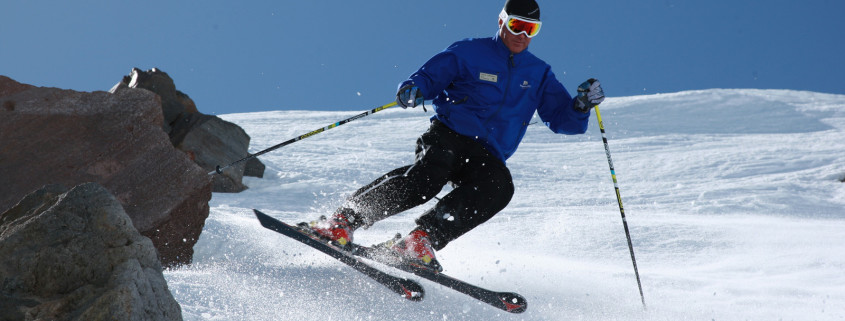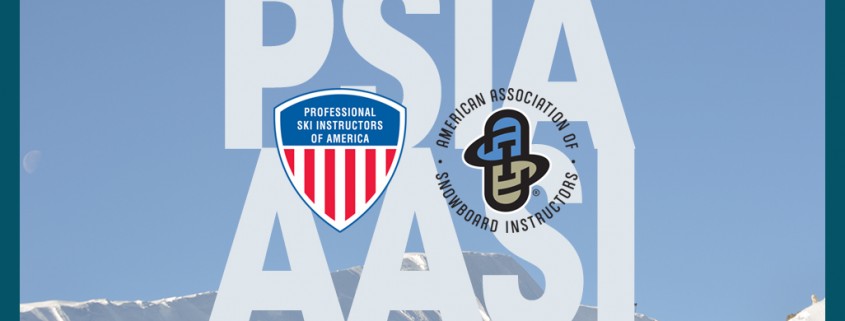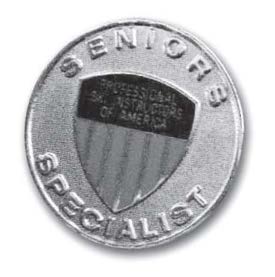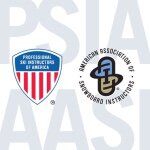The Last Lesson
By Crook Rusty
My wife and I were having dinner one night when the phone rang. It was an old friend from my past. This man was not a bosom buddy, but he had been a friend for years. We had worked in the same ski school for years, and in the last years he had worked for me in my senior program. He informed me that he had moved back to town, after his wife passed away and now was living with his daughter in Carson City.
He told me he was 94 years old and that he had not skied for 10 years, and had never used the new shaped skis. He had been an avid golfer and had lived for quite a while in Palm Springs, California. Now that he was back in town he wondered if he could still ski and he wanted to try the new shaped skis. In the old days, he was a certified instructor and was more than adequate as a skier and instructor.
avid golfer and had lived for quite a while in Palm Springs, California. Now that he was back in town he wondered if he could still ski and he wanted to try the new shaped skis. In the old days, he was a certified instructor and was more than adequate as a skier and instructor.
I informed him that a couple years ago I had a stroke that left me with double vision, so he was asking the walking wounded for help. I asked him why he wanted me, of all people, to help him. He said that he trusted me because he knew that I was so politically incorrect that he could believe what I said and there would be no B.S. I told him if he was willing to put up with me, I would certainly try to help him as best I could. I offered to pick him up, but he informed me that he was still driving and would meet me at the ski area.
We met in the cafeteria, had a cup of coffee, and mapped out our plans for the day. I told him that being an accomplished skier was actually a detriment because he was so used to the old-school methods. I asked him to forget all the things he used to teach and do. I told him what we would do is work on some basic skills, focus on function, and have fun.
It is my belief that older people still have good thought processes and can have their mind do the work their body no longer is able to fight through. It was good to be with an old friend to try and make the most out of function while having fun at the same time. It is my belief that if you don’t understand what you’re trying to do and can’t really feel it, there is little hope of accomplishing anything.
I was able to get my buddy a pair of high-performance shaped skis, good boots, and a pair of ski poles. We were now ready to take on the mountain.
We started with a review of what the stance should be. He agreed with most everything that I said except he thought the weight should be on the balls of the feet, but he told me that being flat-footed made a lot more sense.
The first little drill that we tried was a straight run to a gliding wedge. Here we used flexion and extension. It is a known fact that many older skiers are quite stiff in their body movement. I think by finding out what body movement does for you, he could see how movement helps you with what you are trying to get the skis to do. We took at least two runs doing our change-up drill. By doing this, he could actually feel how the up unwaiting of the extension made it easier to operate the skis. I think that feeling this is very important.
We were working on relatively flat green runs. We were having a good time and no one was bothering us. We were on a long run that gave us plenty of time to work on different maneuvers. The next thing we worked on was keeping a good body stance. After we worked a little on the stance, we worked on the ability to flatten one ski. In doing this, we obviously made a long radius turn in the direction of the flattened ski.
We did this at the top of the rise and it became quite easy to feel what was going on with the skis. In the wedge, people have their weight on the two inside edges. When one of the inside edges is flattened, the other ski becomes dominant, and makes a skier turn.
It was at this stage of our drill that we started talking about a strong inside body. As we flattened the inside ski, we raised our inside hand, elbow, and shoulder to help our body cross over and change the side of the ski that was flattened. This is a simple drill, but it seems to be the biggest help to keep from stepping off the new inside ski to the outside ski. This stepping movement is old school and is referred to as the up and over move. Instead of stepping, we are looking for a flow towards the new turn. I think a lot of the really good skiers still use stepping as they have for many years. It seems to me, this simple drill can help them be more current and flow towards the next turn.
In the natural progression, we take this wedge turn into a wedge Christie. As long as we keep doing the same things we did in the first drill, we maintain good body mechanics and flow. We like to call this the silky-wedge Christy and it seems to be a very important thing. If you get it right, it can help you in most of your general skiing.
Our next drill was obviously the wide track parallel turn and by using almost the same maneuvers, we found it very easy to make a few changes. It is still important to flatten the inside ski and to keep involved all the other things that we were doing. As we go on to the more advanced turns, it all seems to fall into place. By the time we were through, my old friend and I looked around and determined we were more than likely the most contemporary and functionally sound skiers on the hill. Of course, we could have been a little prejudiced.
My friend called me the next day and told me that after the two and a half hours of skiing his legs were not tired at all. I think that was a good testimonial of how well contemporary skiing helps seniors. After 60 years of teaching skiing, it was more than likely my last lesson, and was a great way to end my career. This lesson put me on a high that lasted for weeks.
Interested in finding out more about teaching seniors? Check out our senior summit event on March 5-6!






